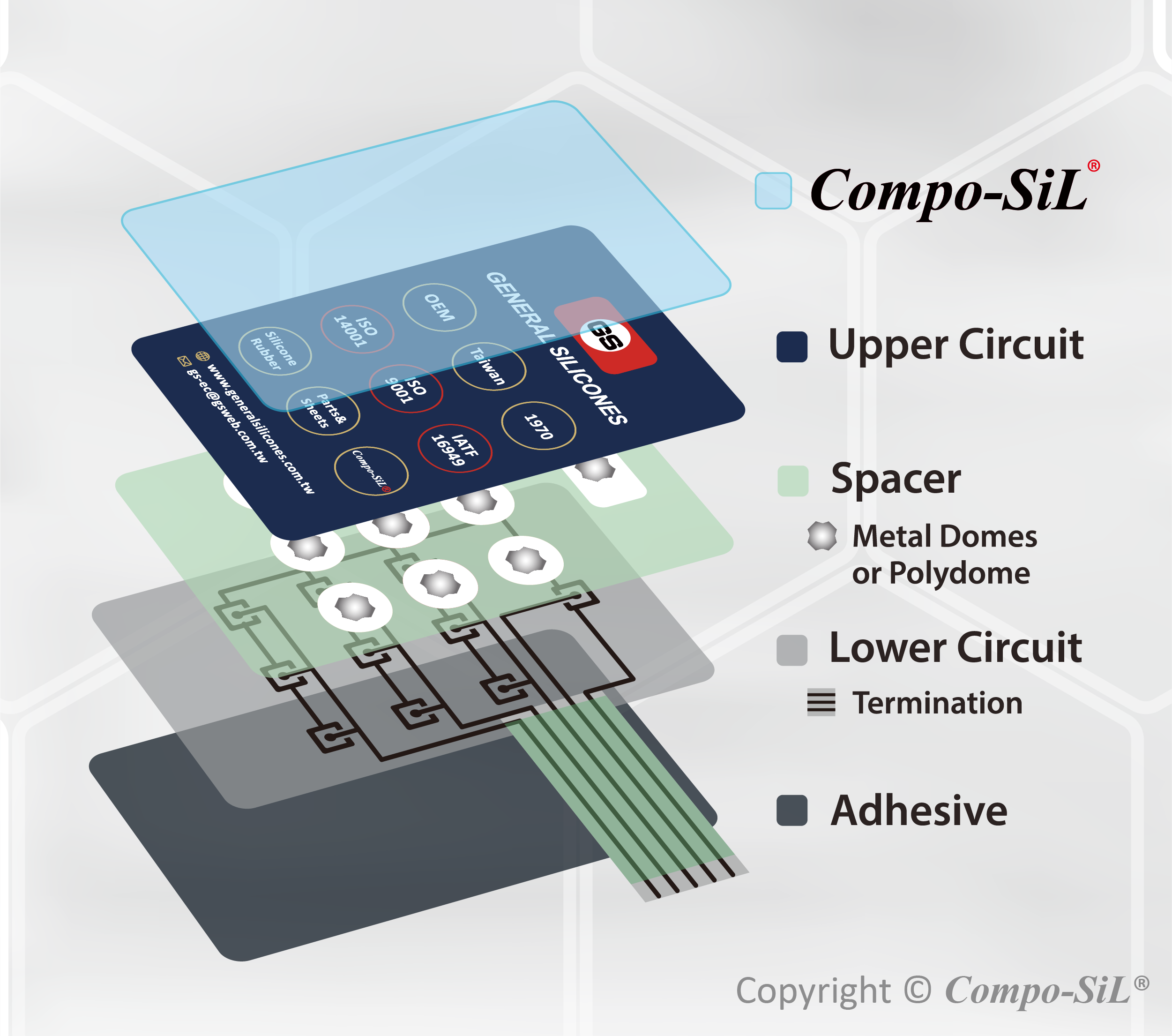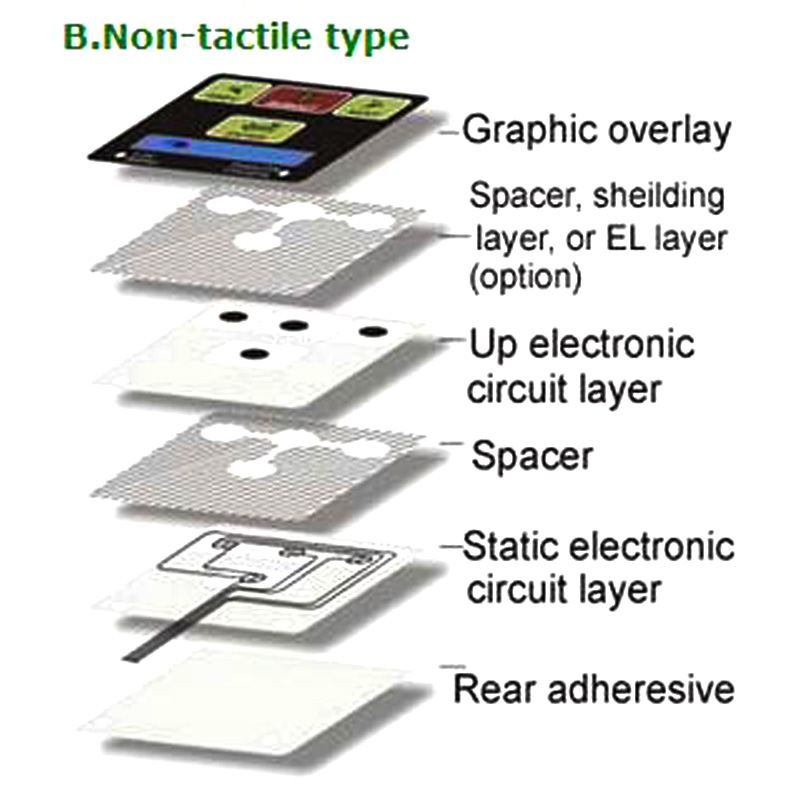The Manufacturing Process Behind Membrane Layer Change: What You Need to Know
The production process behind membrane switches combines careful design, product option, and top quality control. It begins with understanding the ins and outs of membrane button design and proceeds through various phases, including product selections and printing methods. Each stage plays a necessary role in guaranteeing capability and toughness. However, the intricacies of layer construction and the extensive screening standards might reveal understandings that are not instantly evident. What exists past these fundamental elements?
Comprehending Membrane Layer Switch Style
Although membrane layer switches may appear basic initially glance, their style entails intricate considerations that ensure capability and durability. The layout procedure starts with a thorough understanding of user requirements, including the user interface's intended application and ecological factors. Functional designs is a crucial aspect, as the design needs to facilitate convenience of usage while making certain that tactile feedback meets user expectations.Moreover, the layering of elements, such as visuals overlays, sticky layers, and conductive traces, need to be exactly engineered. membrane switch. This layered configuration not only affects the button's responsiveness however additionally affects its long life. Focus is provided to the sealing methods employed to protect versus wetness and dust, which could endanger efficiency. In addition, style considerations reach visual appeals, where color systems and aesthetic clarity enhance customer experience. Inevitably, the style of membrane switches over balances functionality, customer experience, and toughness, making certain that they satisfy the demands of numerous applications successfully
Materials Made Use Of in Membrane Switch Over Production
When selecting products for membrane layer button production, it is vital to ponder both performance and durability. The key products include polyester and polycarbonate movies, which provide versatility and strength. These movies are frequently covered with sticky to guarantee proper bonding to substratums. Conductive inks, generally made up of silver or carbon, are crucial for developing electrical links within the switch, enabling dependable operation.Additionally, a safety layer, such as a tough coat, is often related to improve scrape resistance and longevity. The option of backing product, such as acrylic or foam, can considerably affect the button's tactile feel and total user experience. Various environmental aspects, consisting of temperature level and humidity, must assist product selection to ensure peak efficiency in particular applications. Eventually, the ideal mix of materials adds to the membrane switch's performance and life expectancy, making educated selections vital for suppliers.
The Printing Refine: Creating Video and Text
The printing procedure in membrane layer button production plays a significant role in producing top notch graphics and message. Numerous visuals style methods are utilized to ensure visual appeal and capability, while mindful ink option techniques are crucial for durability and efficiency. Recognizing these components is fundamental for attaining ideal outcomes in membrane layer switch design.
Graphic Layout Techniques
Graphic layout techniques play an important function in the printing process of membrane layer switches, as they define just how graphics and message will eventually show up on the final item. Efficient graphic layout involves the strategic use of colors, formats, and font styles to enhance readability and visual allure. Developers typically make use of vector graphics for scalability, making sure that images stay sharp at various sizes. In addition, focus to contrast and placement is important, as it affects user communication and aesthetic high quality. The unification of branding components, such as logos, need to be handled with care to keep brand stability. On the whole, thoughtful graphic style strategies add considerably to the performance and good looks of membrane switches, affecting customer experience and product efficiency.
Ink Selection Techniques
Picking the appropriate ink is necessary for attaining the desired visual high quality and longevity in membrane switch manufacturing. Numerous ink kinds are utilized, including solvent-based, water-based, and UV-curable inks. Each type provides unique features, such as bond, resistance, and versatility to environmental aspects. Solvent-based inks are commonly preferred for their longevity and vibrant shades, while water-based inks are more eco-friendly but may have limitations in adhesion. UV-curable inks give quick healing and durable efficiency. Furthermore, color matching methods ensure that the selected inks align with layout specifications. Inevitably, the choice of ink should think about elements such as application method, substratum compatibility, and end-use needs to accomplish remarkable results in membrane switch graphics and message.
Layer Building and Assembly

Material Choice Refine
A mindful option of products is important in the manufacturing process of membrane switches, as it directly influences performance and toughness. The key products made use of consist of polyester, polycarbonate, and numerous conductive inks. Polyester is often preferred for its excellent resistance to chemicals and abrasion, making it appropriate for severe atmospheres. Polycarbonate, on the other hand, offers exceptional clearness and effect resistance, which is useful for applications needing presence and effectiveness. Conductive inks, commonly made up of silver or carbon, are essential for developing trustworthy electric pathways. Additionally, the choice of glue products impacts the total honesty of the button - membrane switch. Assessing elements such as environmental direct exposure, responsive comments, and aesthetic needs overviews manufacturers in picking the very best products for their certain applications
Layer Bond Techniques
Sticking layers in membrane layer switch construction is a vital procedure that ensures functionality and longevity. Different adhesion strategies are utilized to secure perfect bonding in between layers, which normally include using adhesives, warm, and pressure. Pressure-sensitive adhesives (PSAs) are frequently utilized for their convenience of application and instant bonding capabilities. In addition, thermal bonding methods can be used, where warm is made use of to trigger adhesive properties, protecting a strong bond. The option of adhesion approach largely relies on the materials included and the specific application demands of the membrane layer switch. Appropriate alignment and consistent application of adhesives are necessary to stop problems, securing the switch runs effectively throughout its designated life-span.
Quality Control Actions
Ensuring high quality control throughout the layer construction and assembly of membrane switches is necessary for maintaining efficiency and dependability. This process commonly involves several important measures, consisting of thorough assessments at each stage of manufacturing. Manufacturers utilize innovative screening techniques, such as peel examinations and attachment analyses, to validate the integrity of layer bonds. Additionally, aesthetic evaluations are conducted to identify any type of problems in printing or material variances. Ecological conditions, such as temperature level and humidity, are carefully kept track of to assure suitable healing and bond. Furthermore, routine calibration of equipment helps keep precise production criteria. By applying these quality assurance steps, suppliers can significantly decrease the danger of product failure, guaranteeing that the final membrane layer changes satisfy the needed requirements and customer find out this here assumptions.
Testing and Quality Assurance Procedures

Technologies in Membrane Switch Over Innovation
As advancements in innovation continue to advance, membrane switches are taking advantage of ingenious growths that enhance their performance and individual experience. One notable technology is the assimilation of capacitive touch innovation, which enables more user-friendly and receptive customer interfaces. This shift not just improves looks however additionally decreases mechanical damage, prolonging the life-span of the switches.Additionally, developments in visuals overlay products have led to enhanced durability and resistance to environmental aspects such as dampness and UV light. These products currently use enhanced quality and brightness, more elevating the aesthetic appeal.Furthermore, the consolidation of wise modern technology is changing membrane changes into interactive control board, enabling connectivity with IoT tools. This connectivity fosters a smooth user experience, leading the method for applications in different industries, from health care to consumer electronics. Collectively, these advancements setting membrane layer switches over as crucial elements in modern-day gadget layout.
Regularly Asked Inquiries
The length of time Does the Membrane Switch Over Production Refine Take?
The duration of the membrane button production procedure can differ considerably. Elements such as complexity, products used, and manufacturing volume influence timelines, with typical manufacturing ranging from a couple of days to numerous weeks for completion.
What Are the Typical Applications for Membrane Switches?
Membrane layer switches are commonly made use of in numerous sectors, including automotive controls, family appliances, clinical devices, and consumer electronics (membrane switch). Their adaptability and resilience make them ideal for applications requiring straightforward interfaces and trusted efficiency in diverse environments
Can Membrane Layer Changes Be Customized for Certain Requirements?

What Is the Life-span of a Typical Membrane Change?
The life expectancy of a regular membrane switch differs, yet generally, it varies from 1 to 5 million cycles. Variables such as use, atmosphere, and material high quality substantially affect resilience and general performance in time.

Are Membrane Layer Switches Ecologically Friendly?
The environmental kindness of membrane layer switches varies. Some materials used might not be recyclable, while others can be environmentally friendly. The general effect relies on making products and practices, requiring mindful consideration throughout selection and disposal. The production process behind membrane changes combines careful design, material choice, and top quality control. It starts with comprehending the details of membrane button go to this website layout and progresses via numerous stages, consisting of material selections and printing strategies. When choosing materials for membrane layer switch production, it is crucial to consider both internet efficiency and durability. A mindful choice of products is necessary in the manufacturing procedure of membrane layer switches, as it straight influences capability and sturdiness. The choice of bond method mainly depends on the materials included and the specific application demands of the membrane button.
Comments on “Membrane switch integration strategies for automated manufacturing”